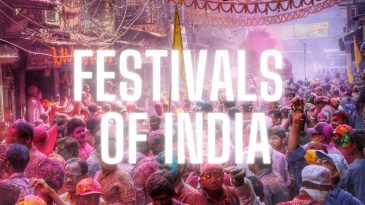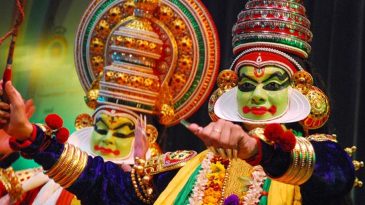- Festivals
- Updated on March 12, 2025
The Significance of Chhath Puja in Hindu Culture
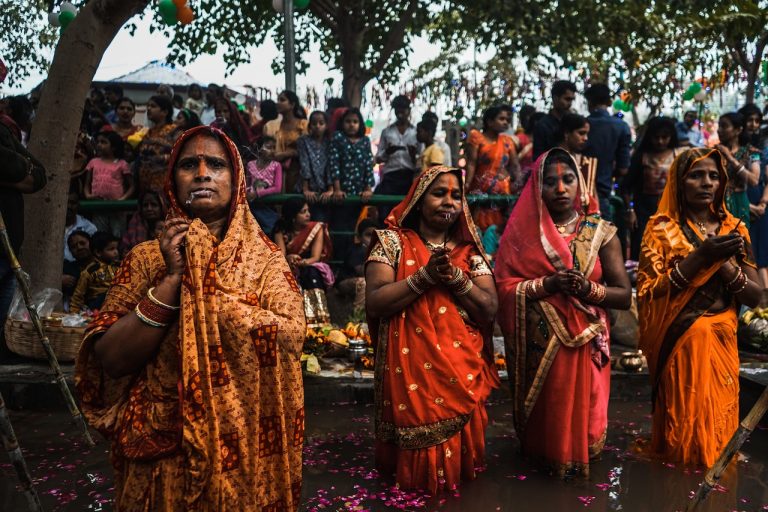
Chhath Puja is a Hindu festival celebrated primarily in the Northern Indian states of Bihar, Jharkhand, and Uttar Pradesh, as well as in some regions of Nepal. It is dedicated to Lord Surya and his sister, Chhathi Maiya.
The word Chhath means Sixth in Maithili, Bhojpuri, and Bhojpuri. It is celebrated on the 6th day of Kartikeya month, known as Chhath Puja.
Chhath Puja: A Celebration of Nature and Sun Worship
The festival usually falls in October or November, six days after Diwali, and is observed over four days. Devotees fast and offer prayers to the Sun God, usually near bodies of water like rivers, ponds, or lakes.
The rituals of Chhath Puja include taking a holy bath, fasting without water for around 36 hours—and standing waist-deep in water to offer prayers during sunrise and sunset. The devotees also make various offerings like fruits, flowers, rice, and sweets to the Sun God. The festival is known for its rigorous nature and acknowledges that performing these rituals will bring well-being, prosperity, and success to the devotees and their families.
Chhath Puja and its Historical Background
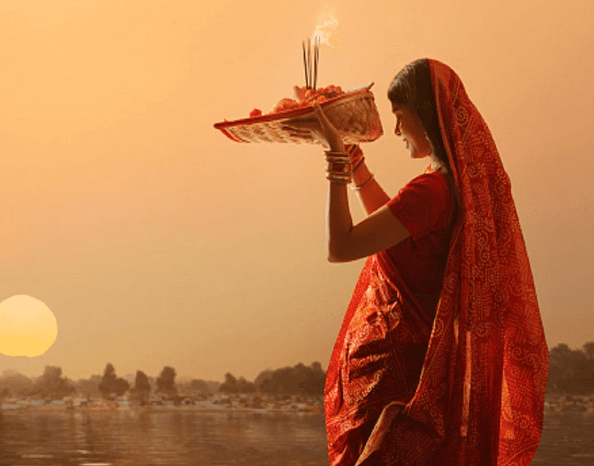
The historical background of Chhath Puja dates back to the Vedic period. This festival is rooted in the Rigveda, one of the oldest Hindu texts. The hymns and rituals associated with the festival are noted in the Rigveda.
Chhath Puja is also associated with the legend of Lord Rama, the protagonist of the Hindu epic Ramayana. Lord Rama and his wife, Sita, observed Chhath Puja after returning to Ayodhya from 14 years of exile. The festival brings benefits and blessings to both devotees and their families.
Chhath Puja Rituals and their Meanings
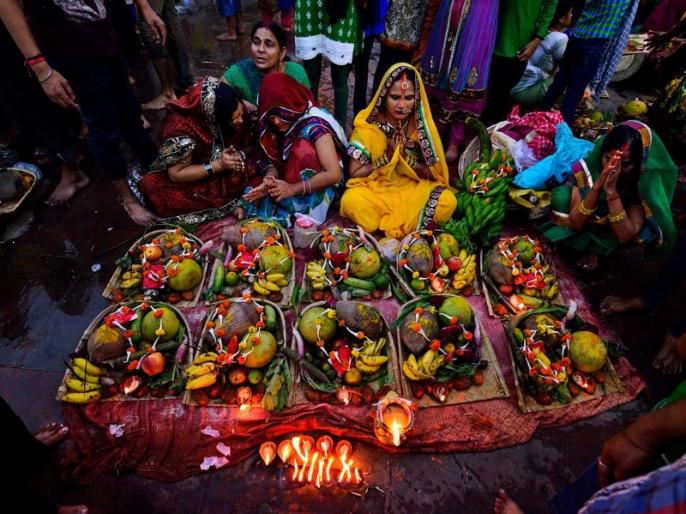
Here are the main rituals and their meanings:
1. Nahay Khay: On the first day, devotees take a holy dip in the river or any other sacred water body before sunrise. They then prepare and offer vegetarian food to the Sun God. This ritual purifies the body and soul and expresses gratitude towards the Sun God for sustaining life on earth.
2. Lohanda and Kharna: On the second day, devotees observe a strict fast throughout the day and break it only in the evening after sunset. They prepare kheer (a sweet dish made with rice, milk, and sugar) and offer it to the Sun God. This ritual symbolizes sharing one’s prosperity with others and seeking blessings for a prosperous life.
3. Sandhya Arghya: On the third day, devotees gather near a water body during sunset to pray to the setting sun. They perform various rituals like chanting mantras, offering fruits, and lighting diyas (earthen lamps). This act represents the worship of the Sun God and seeking spiritual enlightenment.
4. Usha Arghya: On the fourth and final day, devotees wake up early before sunrise and go to the water body to pray to the rising sun. This ritual is considered the most important and signifies the worship of Usha Chandi, the wife of Surya Dev. Devotees pray for their families’ health and prosperity.
Importance of Offering Arghya During Chhath Puja
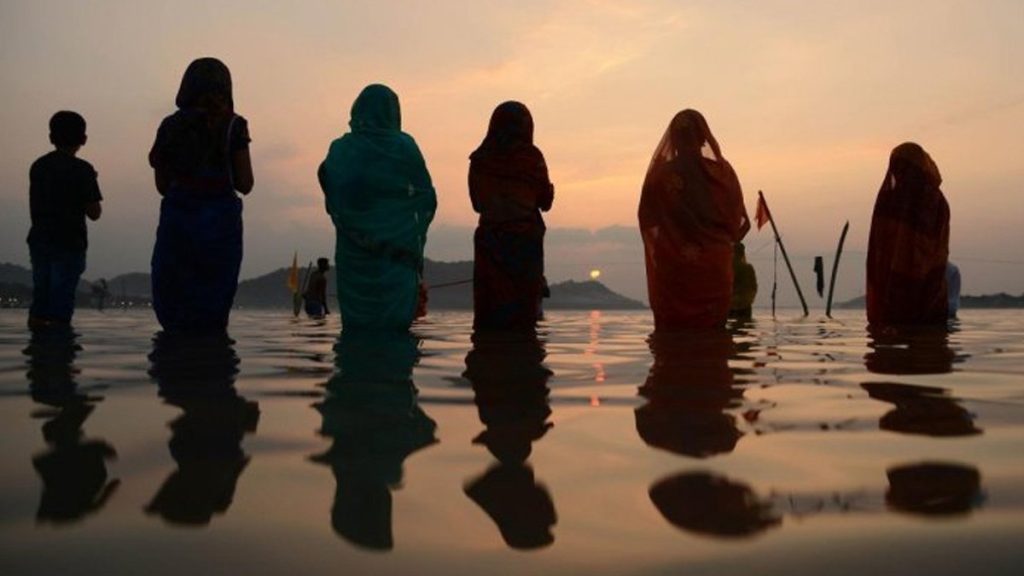
The offering of arghya during Chhath Puja is of great importance. Arghya is offered with diyas (traditional oil lamps) and fruits to the setting and rising sun. Offering arghya to Lord Sun signifies:
1. Worshipping the Sun God
2. Thanking the Sun God
3. Seeking Blessings
4. Purification of Body and Mind
5. Agricultural Significance
6. Cultural and Social Importance
Chhath Puja Traditions and Customs:
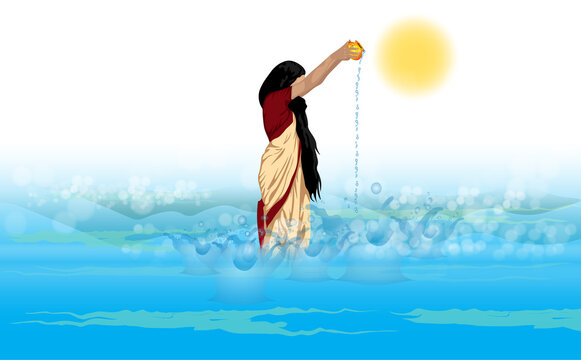
- Fasting: Devotees observe a strict fast throughout the puja, abstaining from consuming food and water.
- Holy dip: On the first day of the puja, devotees take a holy dip in the Ganges or other sacred rivers before sunrise.
- Offering prayers and mantras: Devotees gather near water bodies, either at home or in public ghats, to offer prayers and sing traditional hymns dedicated to Lord Surya and Usha.
- Preparing offerings: Arghya is prepared by filling brass or earthen diyas with pure ghee (clarified butter) and adding fruits, including bananas, coconuts, and sugarcane.
- Chhath Katha: Devotees listen to the Chhath Katha, a sacred mythological story about Chhathi Maiya (the Goddess worshipped during Chhath Puja).
- Celebrating sunset and sunrise: The main rituals involve offering arghya during the sunset and sunrise. Devotees stand in water, facing the sun, and offer arghya while chanting mantras.
- Breaking the fast: On the last day of Chhath Puja, after offering arghya to the rising sun, devotees break their fast by consuming a special prasad (offerings) called “Thekua.” Thekua is a sweet dish of wheat flour, jaggery, and ghee.
Why is Chhath Puja Important for Women?
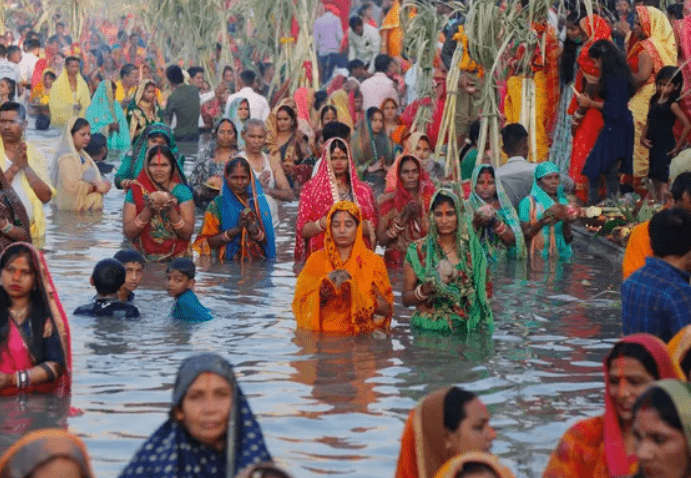
Married women observe Chhath Puja— they are the Vratins (devotees) fasting for their families’ well-being and prosperity. Women perform several rituals believed to bring good health, happiness, and prosperity to the family.
This celebration fosters a sense of unity among women and encourages them to support each other. Women share their experiences, knowledge, and traditions during this time, strengthening their bonds within the community. It is also closely associated with the preservation and conservation of nature. Women participate in the cleaning and decorating of the puja site, often located near rivers or water bodies.
Chhath Puja’s role in strengthening family bonds is crucial as it emphasizes the importance of respect for elders and the family hierarchy. The eldest family member performs the rituals, imparting religious and cultural knowledge to the younger generations. It helps to maintain traditional values and fosters a sense of belonging and identity within the family.
Chhath Puja Songs and Folk Music Significance
Chhath Puja songs and folk music play a significant role in the festival. The songs are known as Chhath Geet, sung in praise of the Sun God and Chhathi Maiya.
The significance of Chhath Puja songs and folk music lies in their ability to invoke a sense of spirituality and connect the devotees with the divine. Sung during the processions and while offering prayers to the Sun God at riverbanks or other water bodies with traditional instruments like the dholak and harmonium.
Chhath Puja’s Impact on the Environment
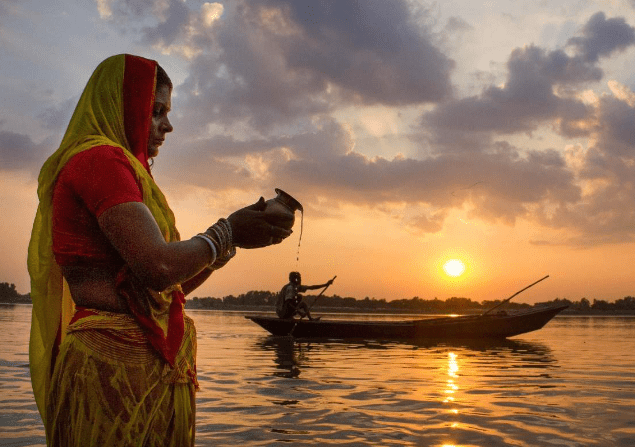
In terms of the impact on the environment, Chhath Puja has both positive and negative aspects. On one hand, the festival encourages people to connect with nature and appreciate the importance of preserving the environment. Taking a dip in rivers promotes cleanliness and respect for water bodies. Making offerings using natural materials, such as bamboo and banana leaves, reduces the festival’s environmental impact.
On the other hand, the large number of devotees and the scale of the festival put strain on the environment. The mass congregation near rivers and water bodies during Chhath Puja often leads to pollution, including the immersion of non-biodegradable materials like plastic and other materials.
Keeping our nature in line with preserving nature is our duty. HAPPY CHHATH!
Read Also : Everything You Need to Know About the Hemis Festival
Conclusion
Chhath Puja’s significance extends beyond the boundaries of religious devotion—it strengthens familial bonds, connects people to nature, and reaffirms the importance of traditions that have been passed down through generations. The festival is a reminder of the beauty and power of nature, and it instills a sense of respect for the environment, urging individuals to lead a life of harmony with nature.
As we continue to celebrate Chhath Puja in the coming years, let us embrace its profound message of devotion, gratitude, and environmental stewardship, while keeping the spirit of unity and reverence alive in our communities.
Join the discussion
Related Articles
No results available
ResetTrending Articles


- General
- Updated on July 15, 2025


- General
- Updated on July 14, 2025
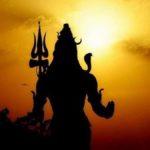

- General
- Updated on July 12, 2025


- General
- Updated on July 12, 2025


- General
- Updated on July 8, 2025


- General
- Updated on July 7, 2025


- General
- Updated on July 8, 2025


- General
- Updated on July 4, 2025


- General
- Updated on July 2, 2025


- General
- Updated on June 30, 2025
No results available
Reset
